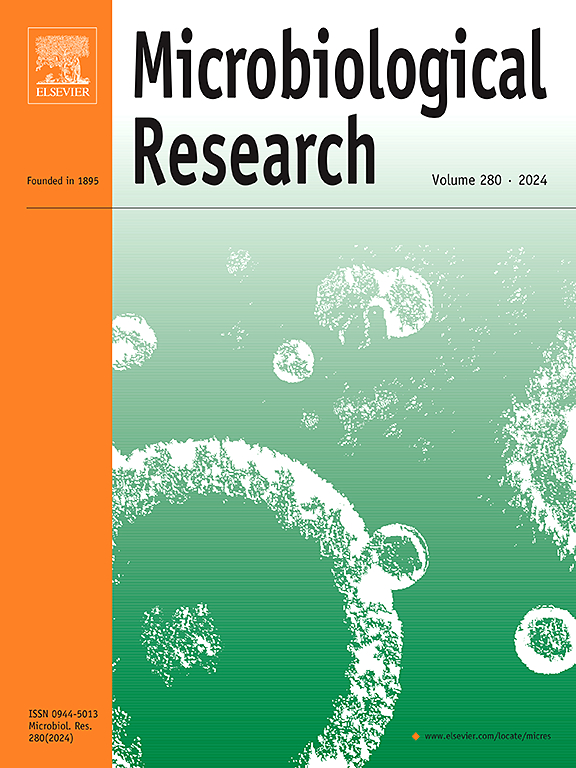Pheromone MAPK pathway regulates the yeast-to-hypha transition in the parasitic mushroom Naematelia sinensis in a cell fusion–independent manner
IF 6.9
1区 生物学
Q1 MICROBIOLOGY
引用次数: 0
Abstract
Naematelia sinensis (Jin Er), a distinctive parasitic mushroom, relies on its interaction with Stereum hirsutum for fruiting body formation. The transition from yeast to hyphae is essential for its lifecycle, facilitating both parasitism and sexual reproduction. Under axenic conditions, however, it predominantly exists in the yeast form. This study established conditions that induce yeast-to-hypha transition and explored the underlying regulatory mechanisms. Hyphal induction was successfully achieved using a medium derived from mushroom spent substrate, with lactose significantly enhancing the transition. Hyphal formation occurred in heterokaryons or co-cultured monokaryons with different B mating-type loci, underscoring the crucial role of the B mating locus. Notably, hyphal development was observed even without physical contact between monokaryons of different B mating loci, suggesting that cell fusion is not a prerequisite and a diffusible signal likely mediates the transition. Genome resequencing revealed structural variations and sequence divergence at the B locus in compatible strains. Transcriptomic analysis revealed the pheromone MAPK pathway as the regulator of the transition, alongside a unique lactose metabolic pathway that diverges from the classical Kluyveromyces model. Lactose appears to function both as a carbon source and as a possible signaling molecule driving dimorphism. These findings provide new insights into the mechanisms of fungal dimorphism and lay a foundation for future research on fruiting body formation and parasitism in N. sinensis.
信息素MAPK通路以不依赖于细胞融合的方式调控寄生菌Naematelia sinensis酵母向菌丝的转变
金耳(Naematelia sinensis)是一种独特的寄生菌,其子实体的形成依赖于与hirsutum的相互作用。从酵母到菌丝的转变对其生命周期至关重要,促进了寄生和有性繁殖。然而,在无菌条件下,它主要以酵母形式存在。本研究建立了诱导酵母向菌丝转化的条件,并探讨了潜在的调控机制。菌丝的诱导是成功的,培养基来源于蘑菇的废底物,乳糖显著增强了过渡。菌丝形成发生在具有不同B交配型位点的异核体或共培养的单核体中,这表明B交配位点的作用至关重要。值得注意的是,即使在不同B交配位点的单核细胞之间没有物理接触,也可以观察到菌丝的发育,这表明细胞融合不是先决条件,扩散信号可能介导了这种转变。基因组重测序揭示了相容菌株B位点的结构变异和序列分化。转录组学分析显示,信息素MAPK途径是这一转变的调节剂,同时还有一个独特的乳糖代谢途径,与经典的克卢维菌模型不同。乳糖似乎既是碳源,也是驱动二态性的可能的信号分子。这些研究结果为深入了解真菌二态现象的发生机制提供了新的思路,并为进一步研究中华白蚁的子实体形成和寄生机制奠定了基础。
本文章由计算机程序翻译,如有差异,请以英文原文为准。
求助全文
约1分钟内获得全文
求助全文
来源期刊

Microbiological research
生物-微生物学
CiteScore
10.90
自引率
6.00%
发文量
249
审稿时长
29 days
期刊介绍:
Microbiological Research is devoted to publishing reports on prokaryotic and eukaryotic microorganisms such as yeasts, fungi, bacteria, archaea, and protozoa. Research on interactions between pathogenic microorganisms and their environment or hosts are also covered.
 求助内容:
求助内容: 应助结果提醒方式:
应助结果提醒方式:


